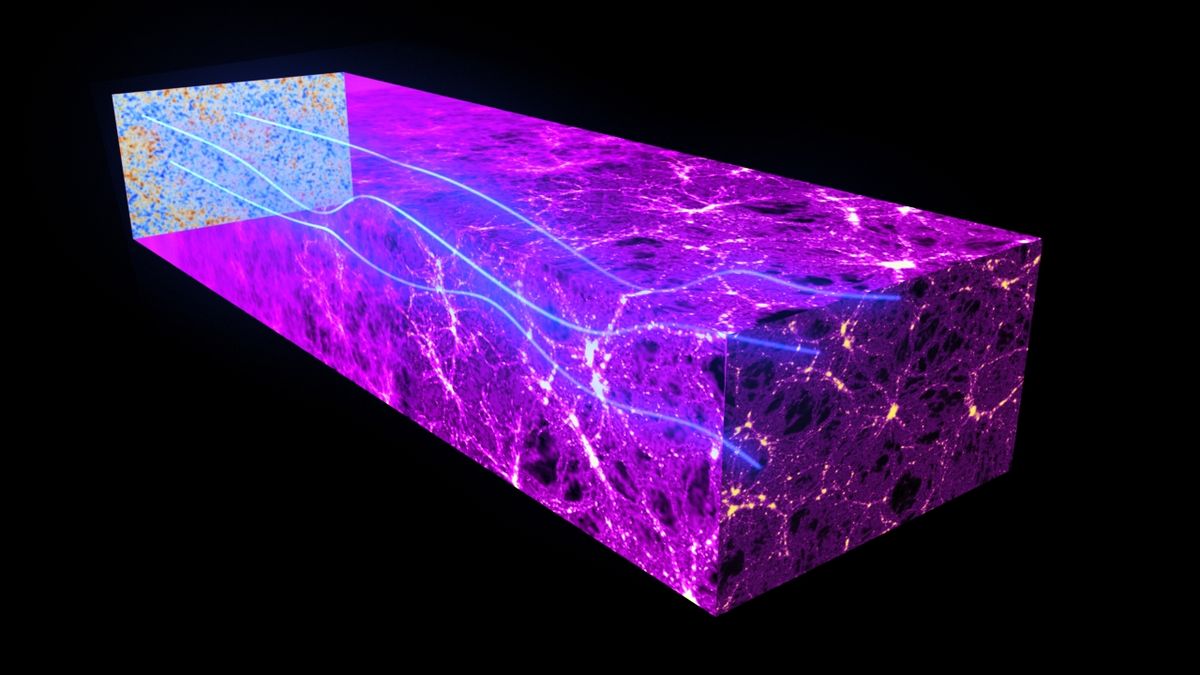Light from Early Universe Has a Twist

Researchers have discovered a subtle twist in the primeval light that formed shortly after the universe came into being. They hope it can reveal new secrets about the moments after the Big Bang.
This afterglow, called Cosmic Microwave Background, or CMB, was created out of hot ionized plasma some 13.7 billion years ago, when the universe was just 380,000 years old. A small fraction of this light is polarized (meaning the light waves vibrate in one plane).
Researchers had already detected this polarized light in one pattern, known as "electric" or E-mode polarization. But using the South Pole Telescope in Antarctica and the European Space Agency's (ESA) Herschel space observatory, researchers for the first time detected polarized light from the CMB in the "magnetic" or B-mode.
The observed B-mode pattern arose from gravitational lensing, in which light gets bent and deflected by massive cosmic objects such as galaxy clusters and lumps of mysterious dark matter, researchers said.
But there is another way to produce B-modes as well: primordial gravitational waves produced during the earliest moments of the universe, when it was in its rapid "inflation" phase, mere trillionths of a second after the Big Bang.
During inflation, the idea goes, the universe expanded faster than the speed of light, doubling in size 100 times or more in just a few tiny fractions of a second. (Einstein's theory of special relativity holds that no information or matter can travel faster than light through space, but this rule does not apply to inflation, which was an expansion of space itself.)
The new detection should provide a sort of baseline that will aid future efforts to measure B-modes produced by gravitational waves, which in turn could reveal a great deal about how our universe grew in its earliest moments, researchers said.
Sign up for the Live Science daily newsletter now
Get the world’s most fascinating discoveries delivered straight to your inbox.
"This measurement was made possible by a clever and unique combination of ground-based observations from the South Pole Telescope — which measured the light from the Big Bang — with space-based observations from Herschel, which is sensitive to the galaxies that trace the dark matter which caused the gravitational lensing," Herschel researcher Joaquin Vieira, of the California Institute of Technology and the University of Illinois at Urbana-Champaign, explained in a statement.
The research was detailed in the journal Physical Review letters, and an early version of the paper can be found on the preprint site Arxiv.
Follow Megan Gannon on Twitter and Google+. Follow us @SPACEdotcom, Facebook or Google+. Originally published on SPACE.com.













